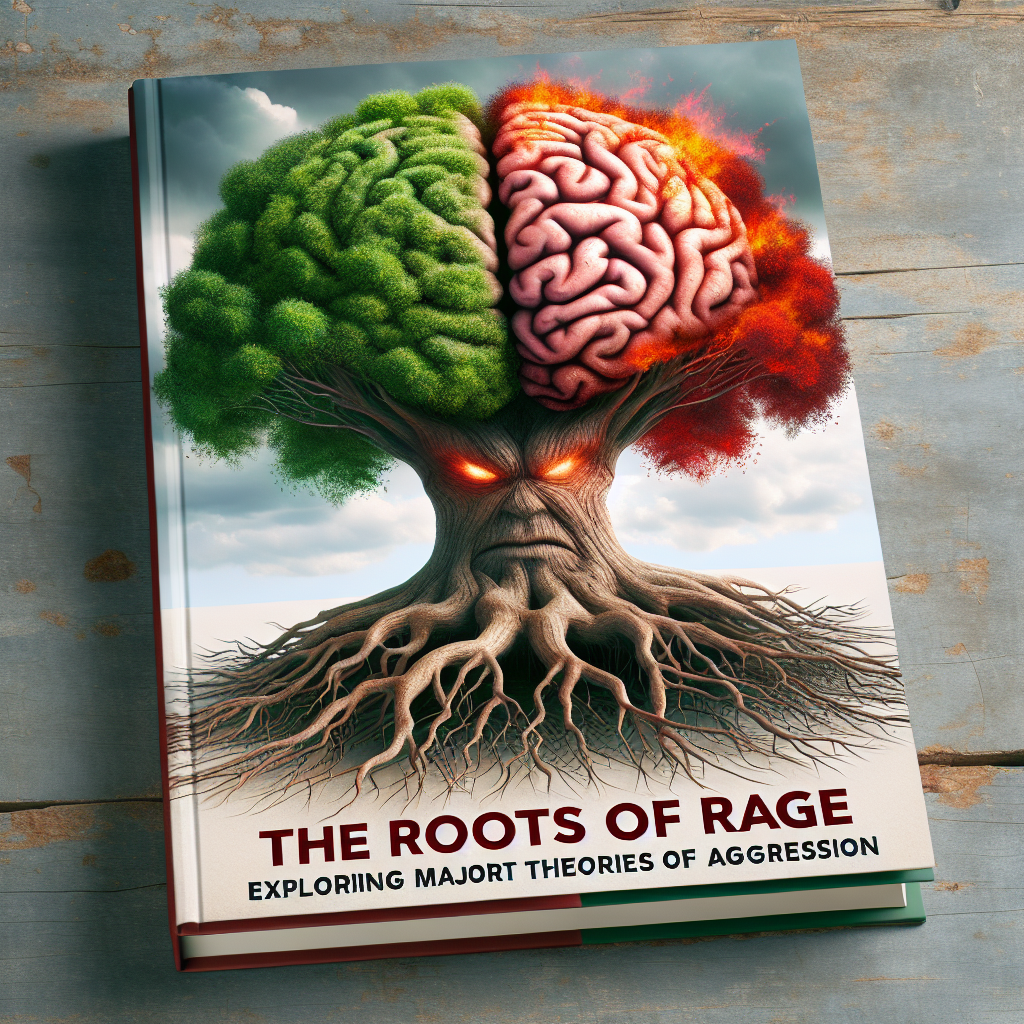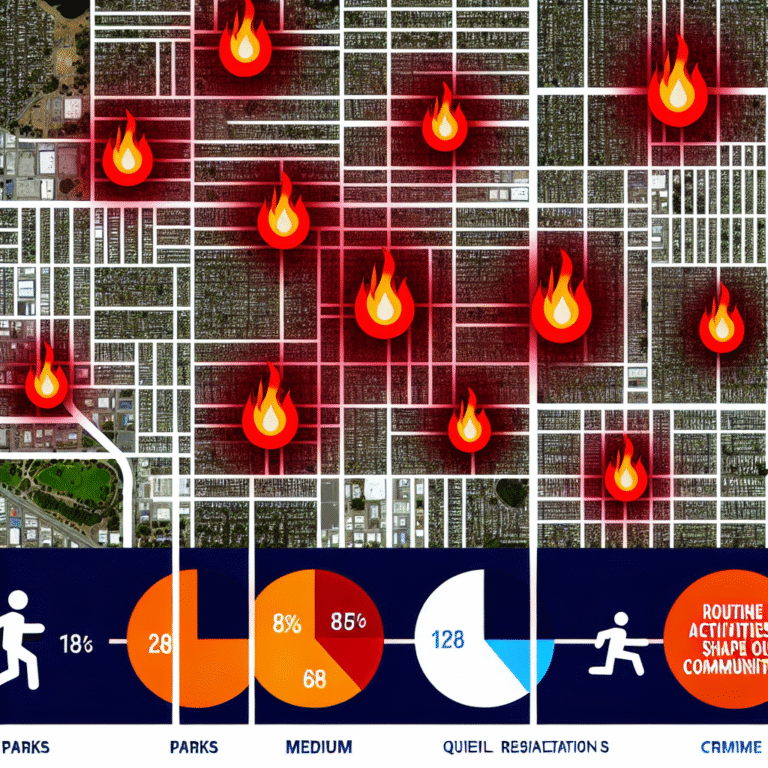
Introduction: Unraveling the Tapestry of Human Emotion
Aggression is a complex tapestry woven into the human experience, manifesting itself in surprising and often troubling ways. To many, anger seems like a primal instinct, a raw and powerful energy that can either destroy or fuel passion. In "The Roots of Rage: Exploring Major Theories of Aggression," we delve into the intricate patterns that underlie this potent emotion. Understanding aggression’s roots is not merely an academic exercise; it has implications for interpersonal relationships, societal dynamics, and mental well-being.
From the playground to boardrooms, aggression permeates our lives. But why do some individuals respond more violently than others? What triggers these outbursts, and how can we mitigate their impact? This article offers a roadmap for understanding aggression through various lenses—from psychological theories to sociocultural contexts—providing insights that can help us navigate our emotional landscapes more skillfully.
The Biological Perspective: Genetics and Neurochemistry
One significant branch of "The Roots of Rage: Exploring Major Theories of Aggression" involves biological determinants, where aggression is viewed as a byproduct of our genetics and neurochemical processes. Research in behavioral genetics indicates that certain genetic markers may predispose individuals to aggressive behavior. A study published in Nature found that variations in the MAOA gene, which is responsible for breaking down neurotransmitters related to mood regulation, can influence aggression levels.
Case Study: The MAOA Gene and Criminal Behavior
In 2002, a landmark study explored the lives of individuals with low activity variants of the MAOA gene. The research linked these genetic factors to violent criminal behavior, suggesting that while environment plays a major role, biology cannot be ignored. Individuals with this genetic predisposition, exposed to trauma or neglect during childhood, exhibited significantly higher rates of aggression later in life.
Analysis: This case illustrates the complex interaction between genetics and environment in the roots of aggression. While the MAOA gene does not doom one to a life of violence, it can amplify responses to adverse experiences, emphasizing the need for early intervention in at-risk populations.
The Psychological Perspective: Theories and Models of Aggression
Moving beyond biology, psychological frameworks offer rich insights into the emotional and cognitive aspects of aggression. Several theories stand out in "The Roots of Rage: Exploring Major Theories of Aggression," including:
1. Frustration-Aggression Hypothesis
Originally proposed by John Dollard and colleagues in 1939, this theory posits that aggression is a direct result of frustration. When an individual’s goal-oriented behavior is thwarted, they may respond with aggressive impulses.
2. Social Learning Theory
Albert Bandura’s seminal work on social learning emphasizes that aggression can be learned through observation. The infamous Bobo doll experiment demonstrated that children imitate aggressive behaviors they witness, highlighting the role of modeling in the development of aggression.
Case Study: The Bobo Doll Experiment
In a 1961 study, children who watched an adult behaving violently towards a Bobo doll were more likely to emulate that behavior when given the opportunity to play with the doll themselves. This experiment sheds light on how media and parental behavior can shape aggressive tendencies in children.
Analysis: The implications of Bandura’s findings are profound, suggesting that societal responses to aggression—whether in media, parenting, or education—can significantly influence future generations’ behaviors.
The Sociocultural Context: Environmental Influences on Aggression
The roots of aggression extend beyond personal psychology and biology to encompass sociocultural factors. Cultural norms, socioeconomic status, and community environment profoundly impact individual aggression levels.
Cultural Differences in Aggression
Different cultures may contextualize aggression differently. For instance, a study comparing American and Japanese children found that while American children exhibited more physical aggression, Japanese children displayed more relational aggression. This suggests that societal values shape permissible expressions of anger and frustration.
Tables and Charts: Aggression Across Cultures
| Culture | Physical Aggression | Relational Aggression |
|---|---|---|
| American | High | Low |
| Japanese | Low | High |
| Western Europe | Moderate | Moderate |
Analysis: This table highlights the varying expressions of aggression across cultures, showing that social norms play a significant role in shaping aggressiveness. Such insights can inform how individuals from different backgrounds interact and resolve conflicts.
The Impact of Society on Aggression: Socioeconomic Factors
Socioeconomic status (SES) is another crucial element frequently discussed within "The Roots of Rage: Exploring Major Theories of Aggression." Research indicates a strong correlation between lower SES and higher aggression levels. Communities facing economic instability often experience higher crime rates, fueled by frustration and a lack of resources.
Case Study: The Impact of Poverty on Aggression
A longitudinal study following children in economically disadvantaged urban areas found that exposure to poverty and violence in the home led to increased aggression over time. The study showed that children from lower SES backgrounds reported higher incidences of conflict at school and in their communities.
Analysis: This case highlights how economic factors can create a cyclical pattern of aggression and victimization, reinforcing the need for societal interventions to break this cycle.
Addressing Aggression: Strategies for Intervention
Understanding "The Roots of Rage: Exploring Major Theories of Aggression" allows us to develop targeted interventions for managing aggression. Here are some strategies for addressing aggression in various contexts:
1. Cognitive-Behavioral Therapy (CBT)
CBT has been shown to be effective in helping individuals manage aggressive impulses by identifying triggers and developing coping mechanisms. Programs targeting youth, in particular, have focused on teaching conflict resolution skills and emotional regulation.
2. Parental Involvement Programs
Parenting programs that focus on positive reinforcement and modeling can help mitigate aggressive behaviors in children. By teaching parents effective communication and emotional management skills, these programs create a healthier home environment.
Successful Interventions in Schools
Many schools have embarked on positive behavior intervention systems (PBIS) to address aggression. By reinforcing positive behavior and addressing conflicts through structured programs, schools have reported lower incidences of violence.
Conclusion: These strategies highlight that intervention can be effective when informed by an understanding of the various theories of aggression. By addressing the multitude of factors contributing to rage, we can cultivate communities that manage aggression more constructively.
Conclusion: Finding Peace Among the Roots of Rage
In "The Roots of Rage: Exploring Major Theories of Aggression," we’ve ventured into the multifaceted nature of aggression. From biological markers to environmental influences, we’ve seen how complex and interconnected these factors are. Understanding the underlying theories of aggression paves the way for interventions that can mitigate its impact, improving both individual lives and community dynamics.
While anger may feel like an uncontrollable force, knowledge offers pathways to management and understanding. Whether through therapy, educational programs, or cultural shifts, we can cultivate environments that prioritize emotional health and conflict resolution.
Motivational Takeaway:
As we navigate the roots of our emotions, let us embrace the opportunity to cultivate understanding, empathy, and constructive dialogue. Through awareness and action, we can transform rage into growth, conflict into collaboration, and despair into hope.
FAQs
1. What are the primary causes of aggression?
Aggression arises from a mix of biological, psychological, and sociocultural factors. Key causes include genetic predispositions, learned behaviors, frustration, and environmental influences.
2. Can aggression be controlled?
Yes, aggression can be managed through various strategies such as cognitive-behavioral therapy, positive reinforcement, and conflict resolution training.
3. How does culture influence aggression?
Cultural norms shape how aggression is expressed. In some cultures, physical aggression may be more accepted, while others prioritize relational aggression or conflict avoidance.
4. Are there specific genes associated with aggressive behavior?
Research has identified several genetic markers, such as the MAOA gene, that may contribute to a predisposition towards aggression, particularly when combined with adverse environmental factors.
5. What role does socioeconomic status play in aggression?
Lower socioeconomic status is correlated with higher levels of aggression, as economic stress and instability can exacerbate feelings of frustration and hopelessness, leading to aggressive behavior.
In exploring "The Roots of Rage: Exploring Major Theories of Aggression," we become better equipped to address and manage our emotional responses, fostering healthier communities and relationships.















